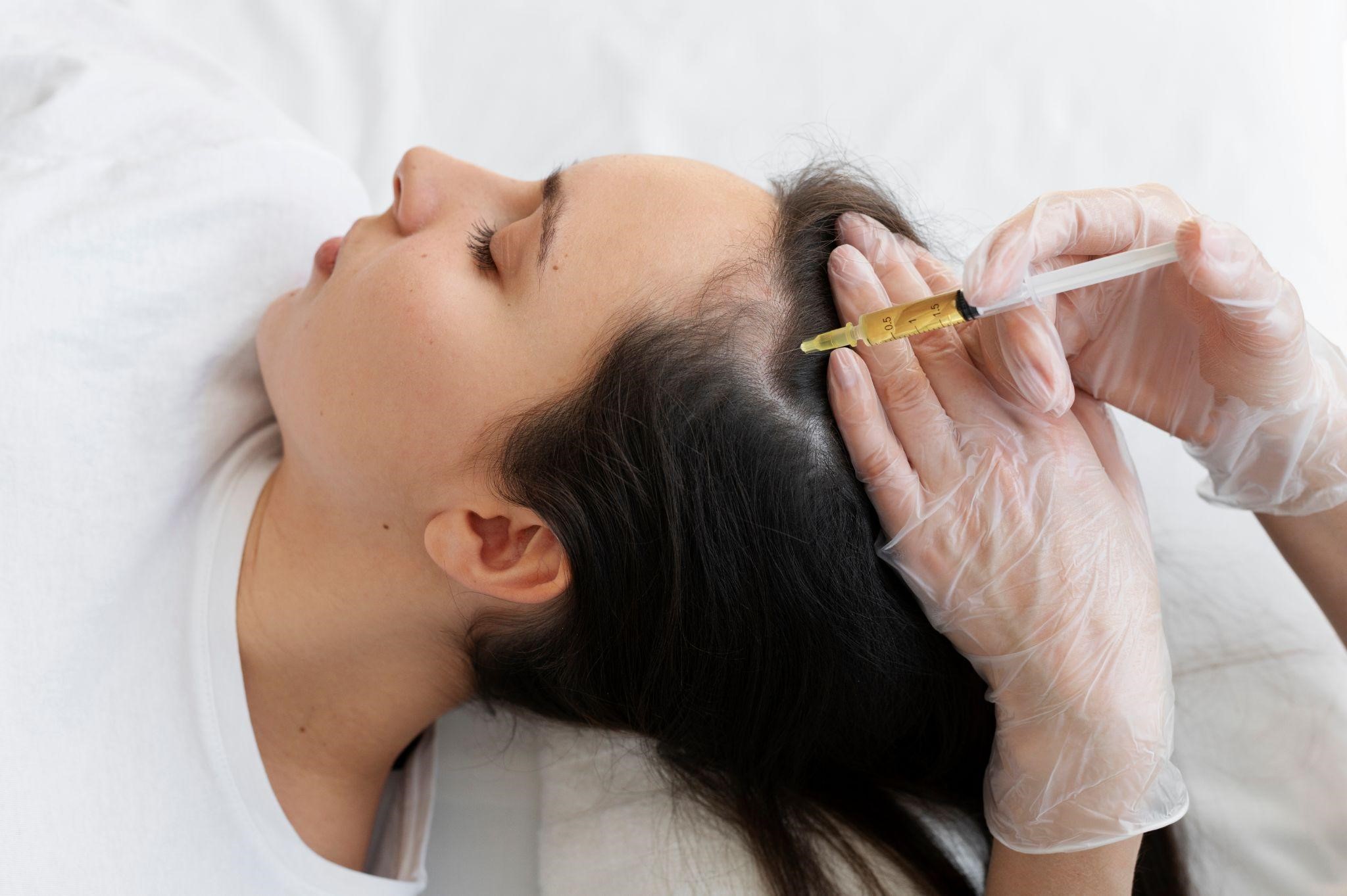
Scalp micro-needling, a term you may have heard bouncing around in the beauty and health spheres. But, what is it exactly? In essence, scalp micro-needling is a minimally invasive procedure that uses tiny needles to prick your skin. The purpose of this procedure is to generate new collagen and skin tissue for smoother, firmer, and more toned skin. It is primarily used on the face for wrinkles, scars, and large pores.
However, scalp micro-needling has recently been gaining attention for its potential benefits for hair growth. It’s a technique that’s been around for a while but has seen a resurgence in popularity as people seek out natural methods to increase hair growth and thickness.
The technique is based on the skin’s ability to heal itself. Similarly to how our bodies create new skin to heal a wound, the micro-injuries made by the needles prompt the skin to stimulate collagen production, which can lead to better hair growth.
The Science Behind Scalp Micro-needling
The concept of scalp micro-needling is rooted in solid scientific principles. When a needle penetrates the skin, it creates a small wound. This micro-injury triggers the body’s wound healing process, which includes inflammation, proliferation, and remodeling.
During the inflammation phase, the body rushes blood to the area, bringing with it oxygen and nutrients to aid in healing. Next, during the proliferation stage, new cells, including fibroblasts, are formed. These cells are responsible for creating collagen and elastin, two proteins essential for skin elasticity and strength.
Finally, during the remodeling phase, the collagen and elastin are organized into a more structured, stronger matrix, increasing the skin’s overall health and resilience. This process also stimulates the hair follicles, leading to increased hair growth.
Benefits of Scalp Micro-needling
Scalp micro-needling offers numerous benefits, especially for those dealing with hair loss. One of the most notable benefits is the increase in hair growth. By creating micro-injuries that stimulate the body’s natural healing response, micro-needling can wake up dormant hair follicles and encourage healthy hair growth.
In addition to promoting hair growth, scalp micro-needling can also improve the overall health of your scalp. The process can help exfoliate the scalp, removing dead skin cells and promoting a healthier scalp environment. This can lead to healthier, shinier hair.
Moreover, scalp micro-needling can also increase the effectiveness of topical treatments. The tiny punctures created by the procedure can act as mini channels, allowing for better absorption of hair growth serums or other topical treatments.
The Process of Scalp Micro-needling: A Step-by-step Guide
The process of scalp micro-needling may sound daunting, but it’s a relatively straightforward procedure that can typically be completed in less than an hour. Here’s a step-by-step guide to what you can expect.
First, your practitioner will clean your scalp thoroughly to prevent any infection. Then, a numbing cream may be applied to your scalp to reduce discomfort during the procedure. Once your scalp is numb, the practitioner will use a micro-needling device to create tiny punctures in your scalp. The device will be moved across your scalp in a pattern to ensure even treatment.
Following the micro-needling, a serum or treatment may be applied to your scalp. These treatments can range from growth factors to PRP (platelet-rich plasma), depending on your specific needs. The micro-channels created by the needling allow these treatments to penetrate deeper into the skin, enhancing their effectiveness.
Risks and Side Effects of Scalp Micro-needling
Like any procedure, scalp micro-needling comes with its own set of potential risks and side effects. It’s essential to be aware of these before deciding if this treatment is right for you.
The most common side effect is temporary redness and swelling at the treatment site. Some people may also experience minor bleeding or bruising. These side effects typically subside within a few days.
More serious risks include infection, scarring, and changes in skin color. These are typically rare and can be minimized by choosing a qualified practitioner and following proper aftercare procedures.
Aftercare: How to Take Care of Your Scalp Post Micro-needling
Proper aftercare is crucial to maximize the benefits of scalp micro-needling and minimize potential side effects. Here are some tips on how to take care of your scalp post-procedure.
Firstly, avoid washing your hair for 24 hours after the procedure to allow your scalp time to heal. When you do wash your hair, use a gentle, sulfate-free shampoo to avoid irritating your scalp.
Avoid using hair styling products, including hair sprays and gels, for a few days after the procedure. These can potentially irritate your scalp and slow down the healing process.
Lastly, protect your scalp from the sun. The procedure can make your scalp more sensitive to the sun, increasing the risk of sunburn. When outside, wear a hat or apply a sunscreen specifically designed for the scalp.
Cost of Scalp Micro-needling
The cost of scalp micro-needling can vary widely depending on a number of factors, including the size of the area being treated, the number of sessions required, and the specific clinic or practitioner you choose.
On average, you can expect to pay anywhere from $200 to $700 per session. Some clinics may offer package deals if multiple sessions are required.
Scalp Micro-needling vs Other Hair Growth Treatments
Compared to other hair growth treatments, scalp micro-needling offers a less invasive, more natural approach. While treatments like hair transplants can deliver dramatic results, they are also more invasive, costlier, and carry a higher risk of side effects.
On the other hand, treatments like minoxidil or finasteride, while less invasive than hair transplants, can cause side effects like scalp irritation, and their results often take longer to become noticeable. In contrast, scalp micro-needling can deliver noticeable results in as little as a few sessions, with minimal side effects.
Frequently Asked Questions About Scalp Micro-needling
In this section, we’ll answer some of the most frequently asked questions about scalp micro-needling.
Q: Is scalp micro-needling painful?
A: While the procedure involves needles, most people report minimal discomfort. A numbing cream is typically applied before the procedure to reduce any potential discomfort.
Q: How many sessions will I need?
A: The number of sessions required can vary depending on your specific goals. On average, most people require 3-6 sessions spaced a few weeks apart for optimal results.
Q: Can I do scalp micro-needling at home?
A: While there are at-home micro-needling devices available, it’s generally recommended to have the procedure done by a professional to minimize risks and ensure the best results.
Conclusion
In conclusion, scalp micro-needling is a promising treatment for those seeking to boost hair growth and improve scalp health. While it does come with potential risks and side effects, these can be minimized with proper aftercare and by choosing a qualified practitioner. As with any treatment, it’s always best to consult with a healthcare professional before deciding if scalp micro-needling is right for you.

